Recently, local naturalists and NHSN’s Earth Sciences Specialist Group set out to explore the intriguing geology of the Harthope Valley. Take a look at what they discovered.
We saw our fair share of natural history on this trip including a Hare, Dipper, Blue Tits and a huge mushroom. However, we saw just three types of rocks including andesite, granite and possible dyke material. We explored the lower stretches of the Carey Burn, just above its confluence with the Harthope Burn, that flows through alluvial terraces beneath till covered valley sides.
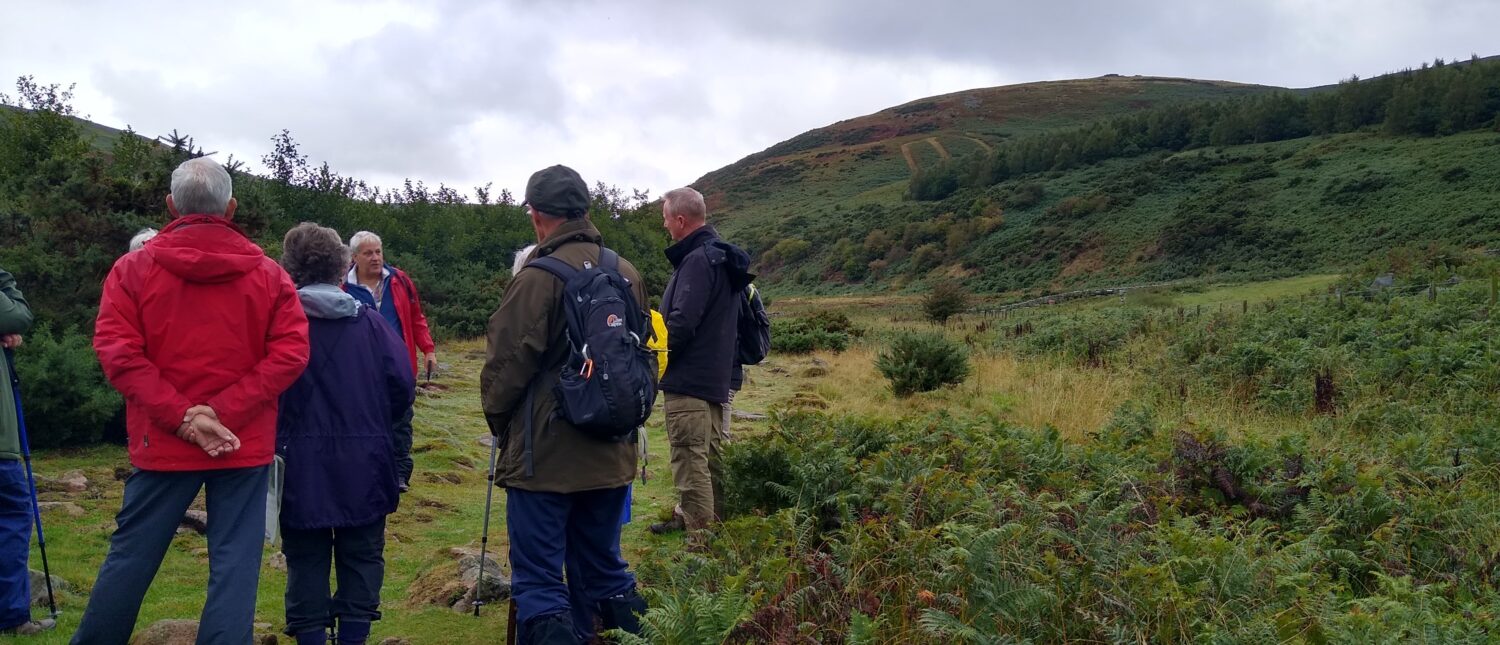
Till covered valley sides
As the valley narrows upstream bedrock is exposed alongside the path, the first outcrops are of hornfelsed andesite. It is dark purple-grey in colour and splintery, metamorphosed by the later intrusion of granite nearby. Although composed of pyroxene and feldspar, it is so fine-grained that no crystals could be seen, even with a hand lens.
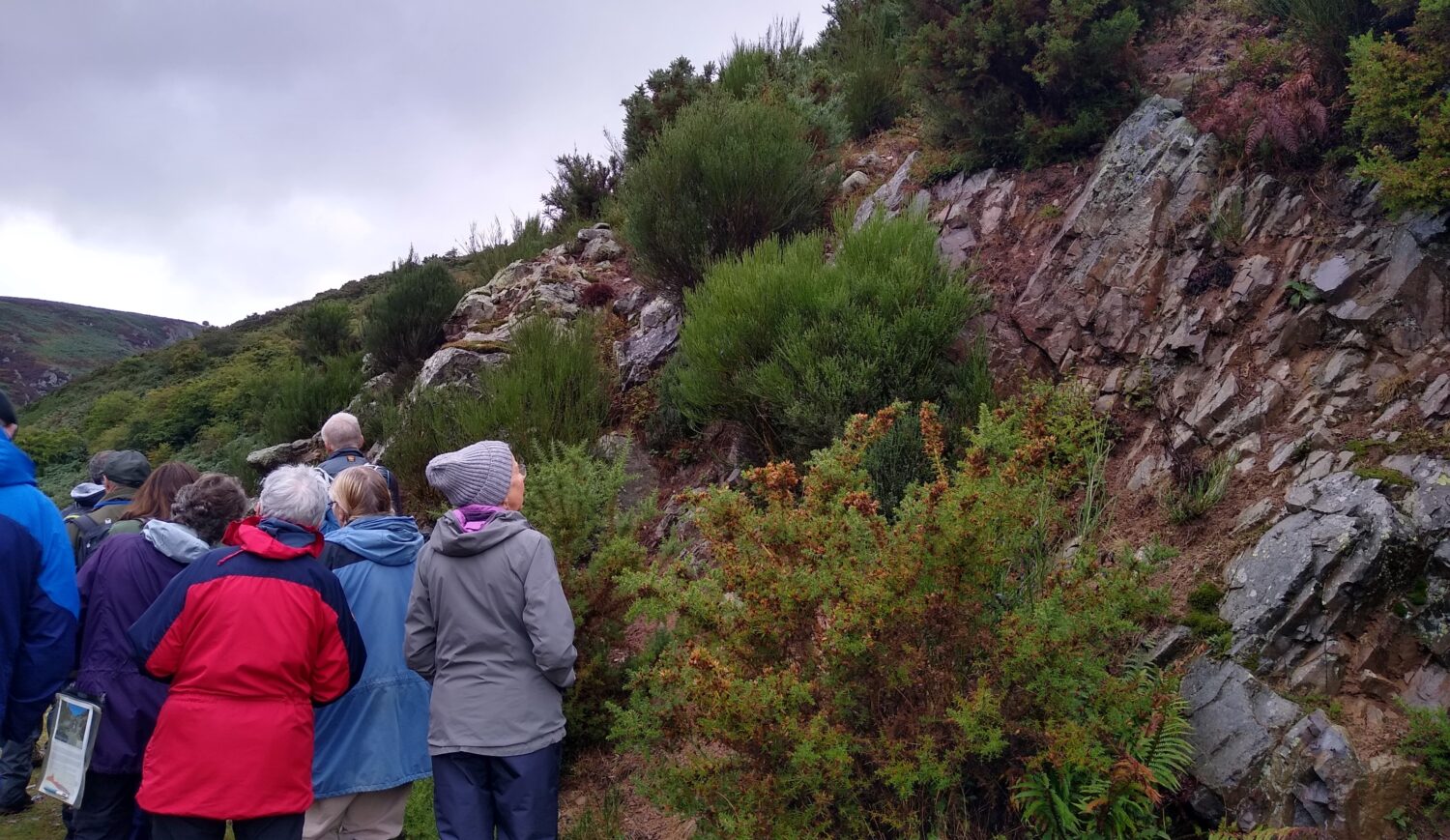
Andesite exposed along the path
More andesite was seen in the scree that covers the valley slopes. Some pieces are reddish-buff coloured on the surface (due to weathering). Fresh surfaces reveal a fine-grained groundmass containing much larger green and yellow phenocrysts. These are secondary minerals brought about by hydrothermal alteration of the pyroxene and feldspar relatively soon after eruption of the andesite. We referred to these rocks ‘altered’ andesite.
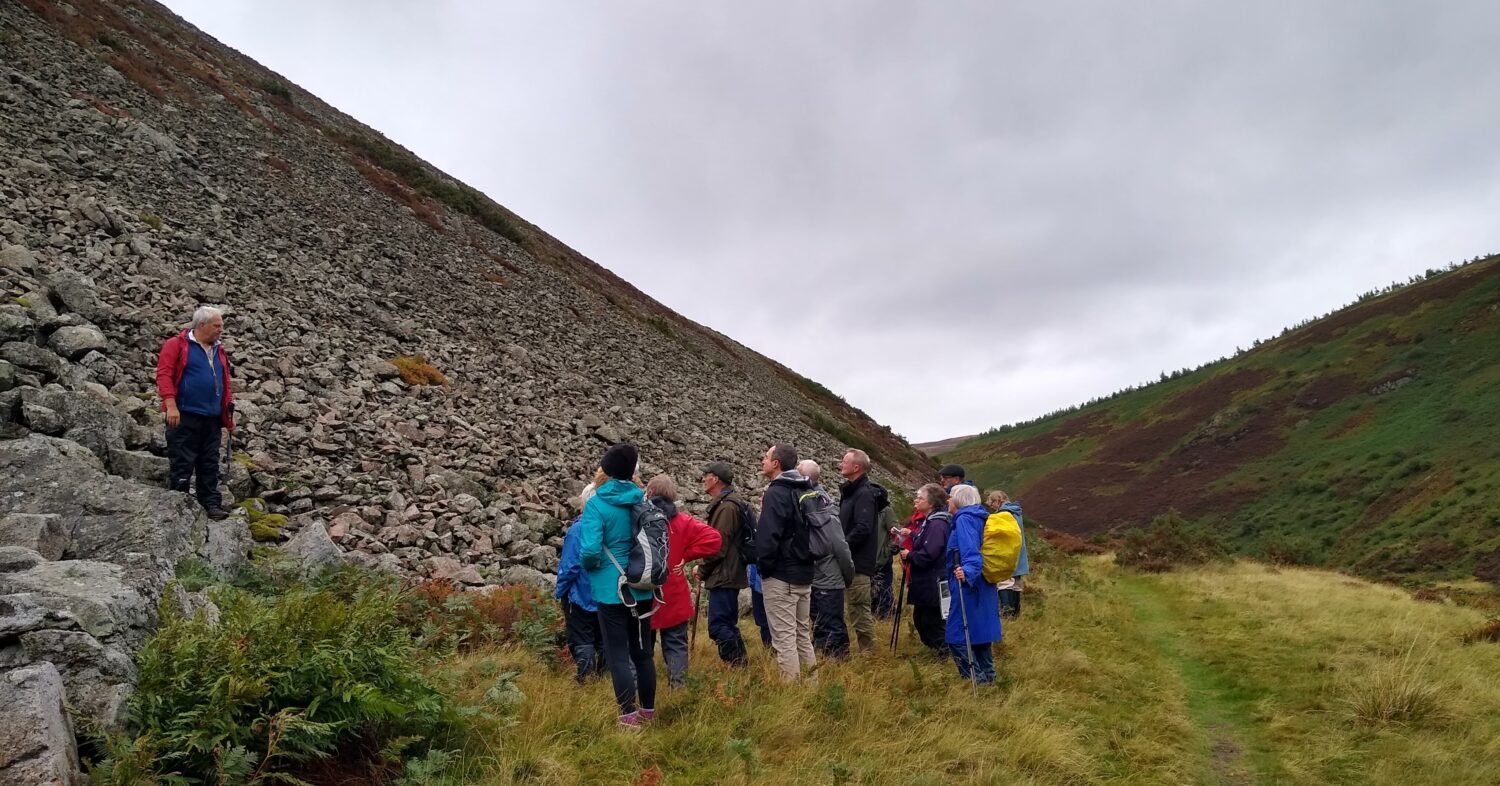
Scree covering the valley slopes
Further upstream we reached the little cascade of Careyburn Linn. Two dykes are mapped in the area of the waterfall but they are not at all clear on the ground. There are areas of reddish buff coloured fine-grained porphyritic rock. Could these be the dyke rock?
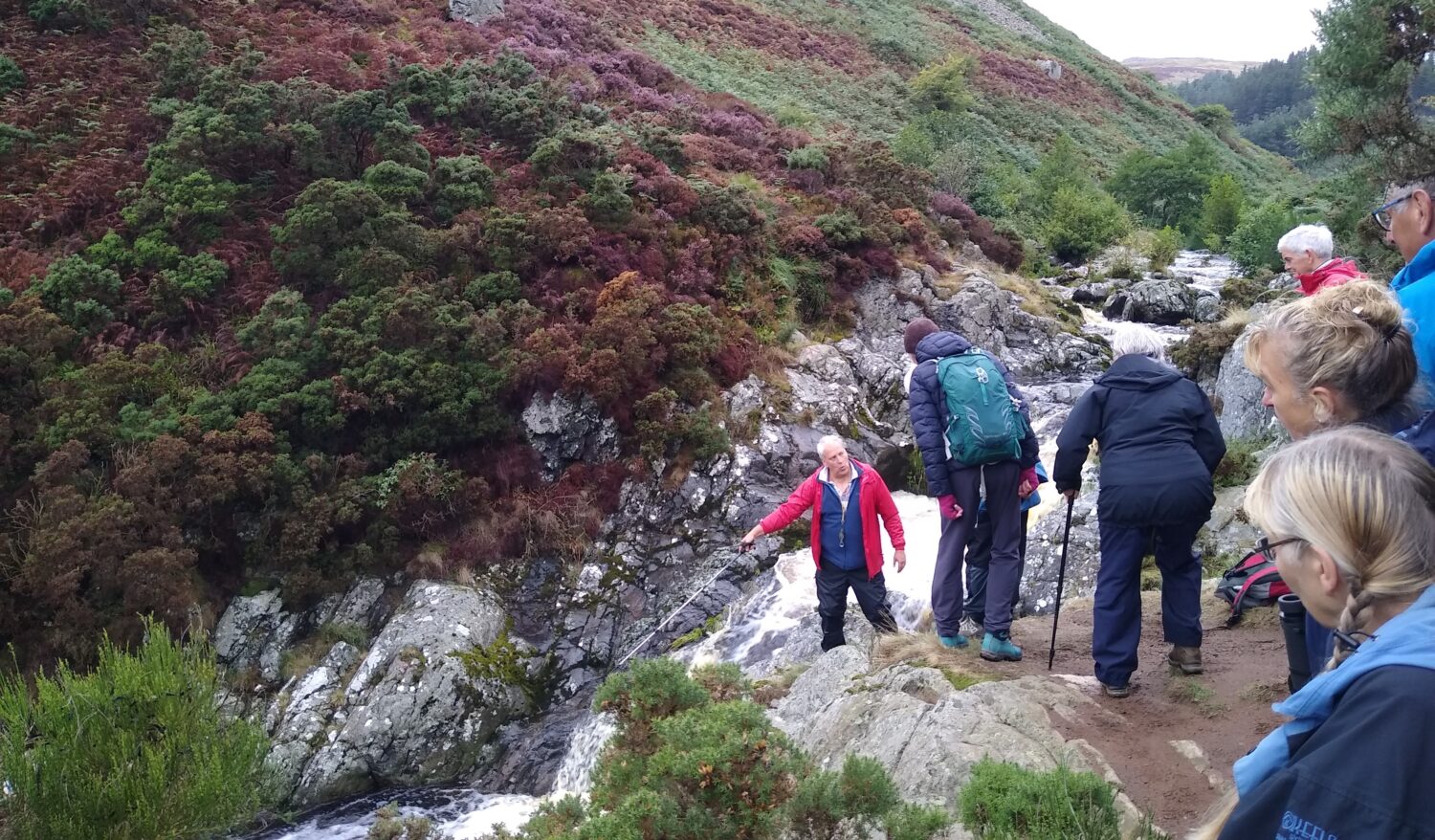
Careyburn Linn
Above the waterfall dark grey ‘normal’ andesite is found, a fine-grained rock with a few phenocrysts (larger crystals) of feldspar and pyroxene. The presence of apparently unaltered andesite above the falls indicates we must be close to the edge of the metamorphic aureole. Indeed, from the map the nearest granite is about 1km to the west.
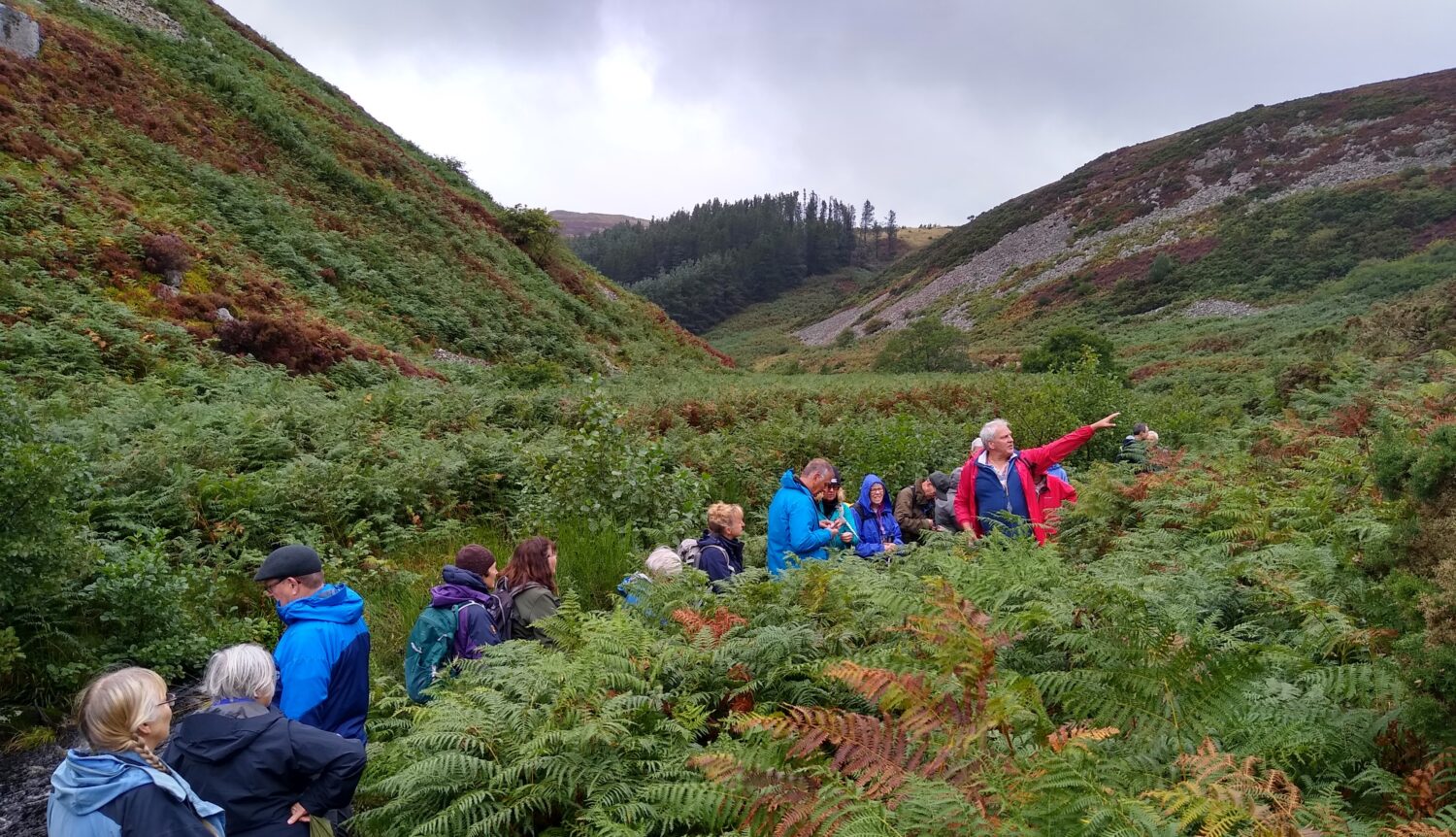
Investigating unaltered andesite above Careyburn Linn
On the north-east flank of Hedgehope are several prominent tors. They occur very close to the mapped boundary between the granite and the andesite. The most westerly of the tors are Long Crags and Housey Crags which are outcrops of andesite above granite. Those to the east, Langlee Crags and Middleton Crags, are outcrops of the underlying andesite. A fault separates the eastern crags from the western ones. There is little evidence for the contact between Long and Housey Crags with the granite other than thin veins of granitic material, a possible sign of stoping. No granite outcrops are seen adjacent to them.
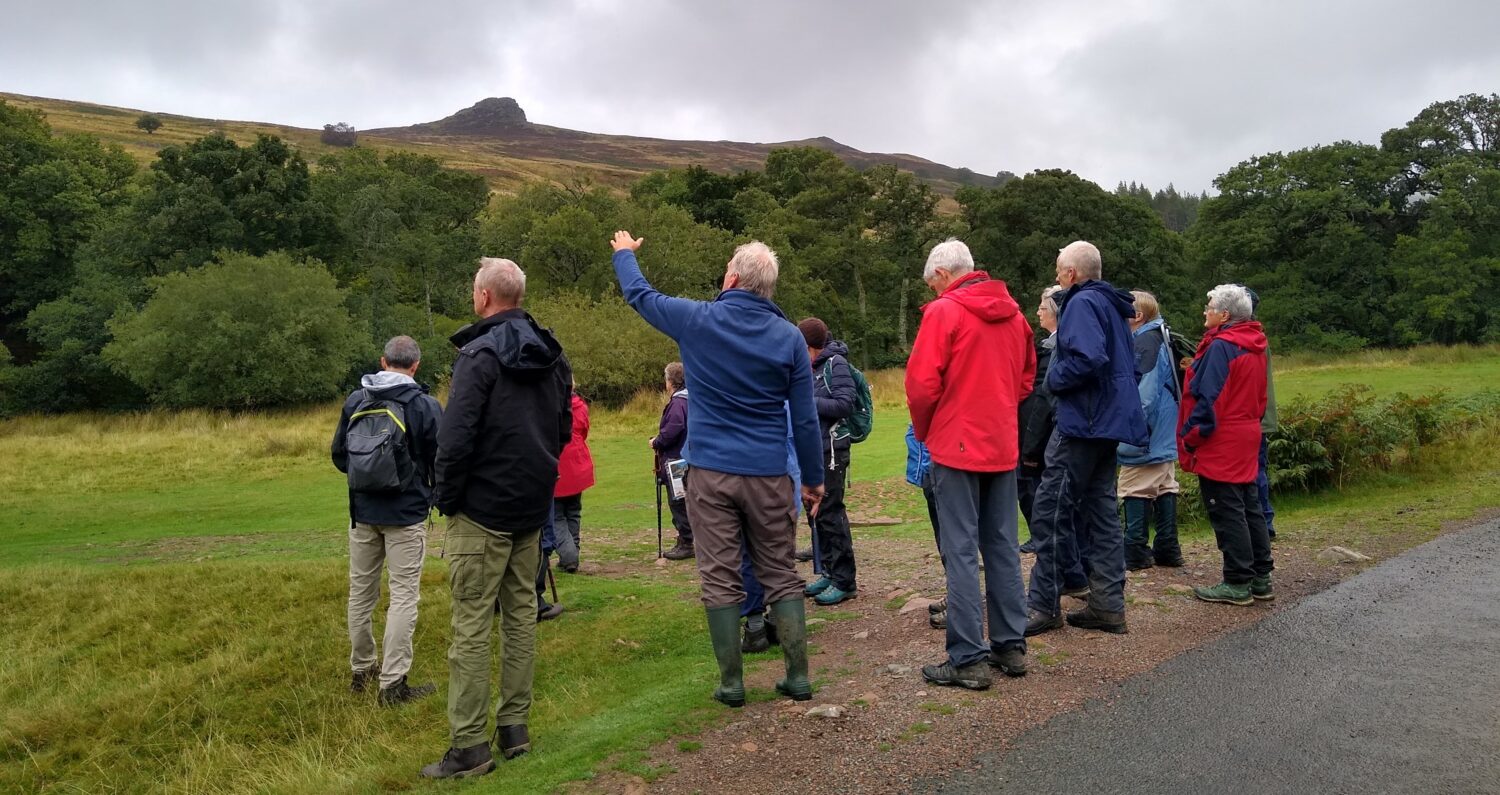
Long Crags and Housey Crags on the skyline
The parking area at the end of the road to Langleeford is alongside the Harthope Burn and directly below Long Crags. In the burn itself there are outcrops of granite of the so-called Granophyric variety.
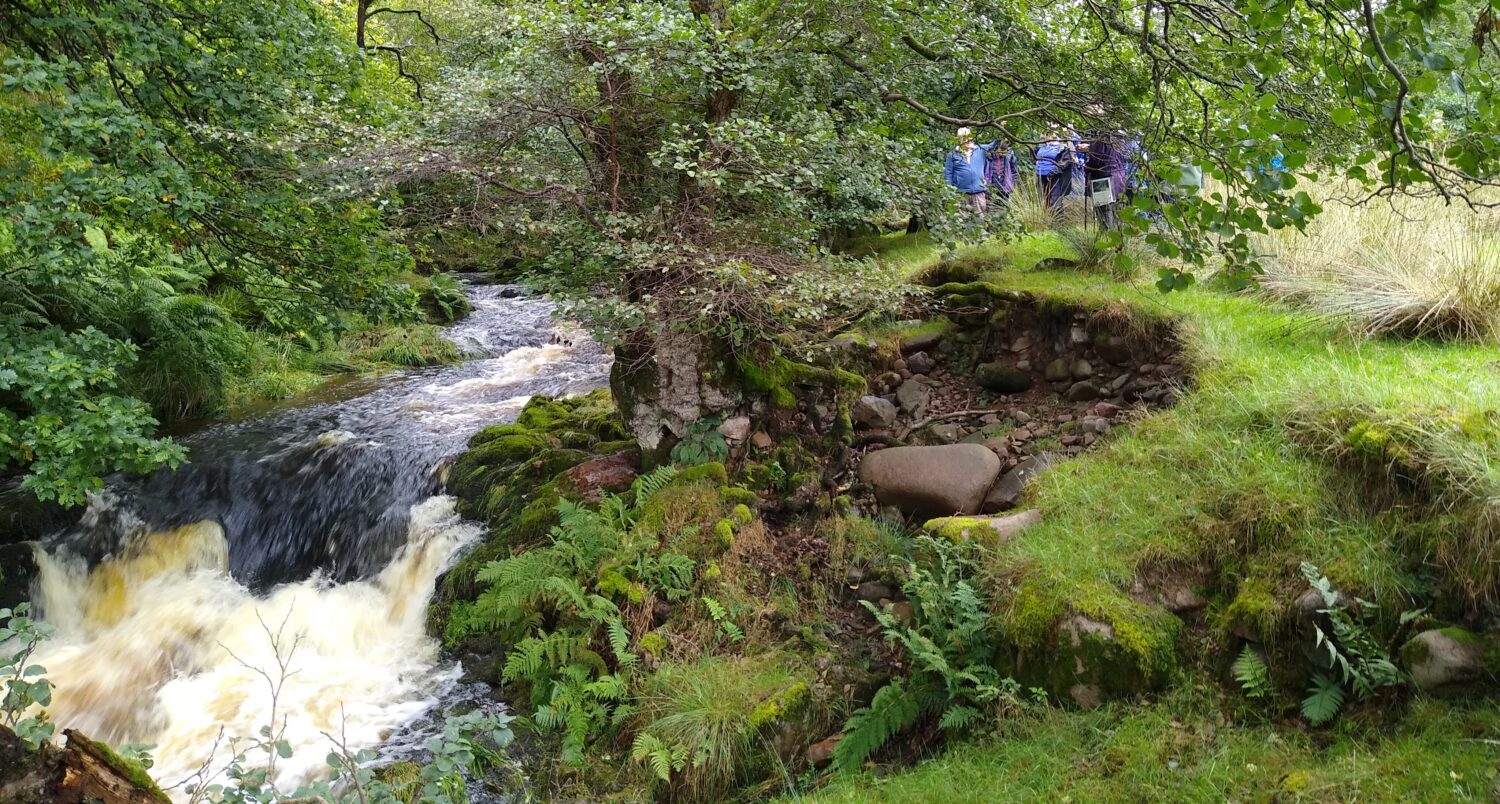
Outcrops of granite alongside Harthope Burn
Rock exposures in the Cheviots are few and far between and contacts between the different rock types equally rare, but there is one we were able to show the group. It’s a river bluff on the south bank of the Harthope Burn, below an area labelled ‘The Shank’ on the OS map. The rocky outcrop is orange- coloured on the surface but a fresh exposure reveals it to be granite. The downstream side, however, is composed of fine-grained, closely jointed, splintery andesite. This has been hornfelsed by the intrusion of the granite.
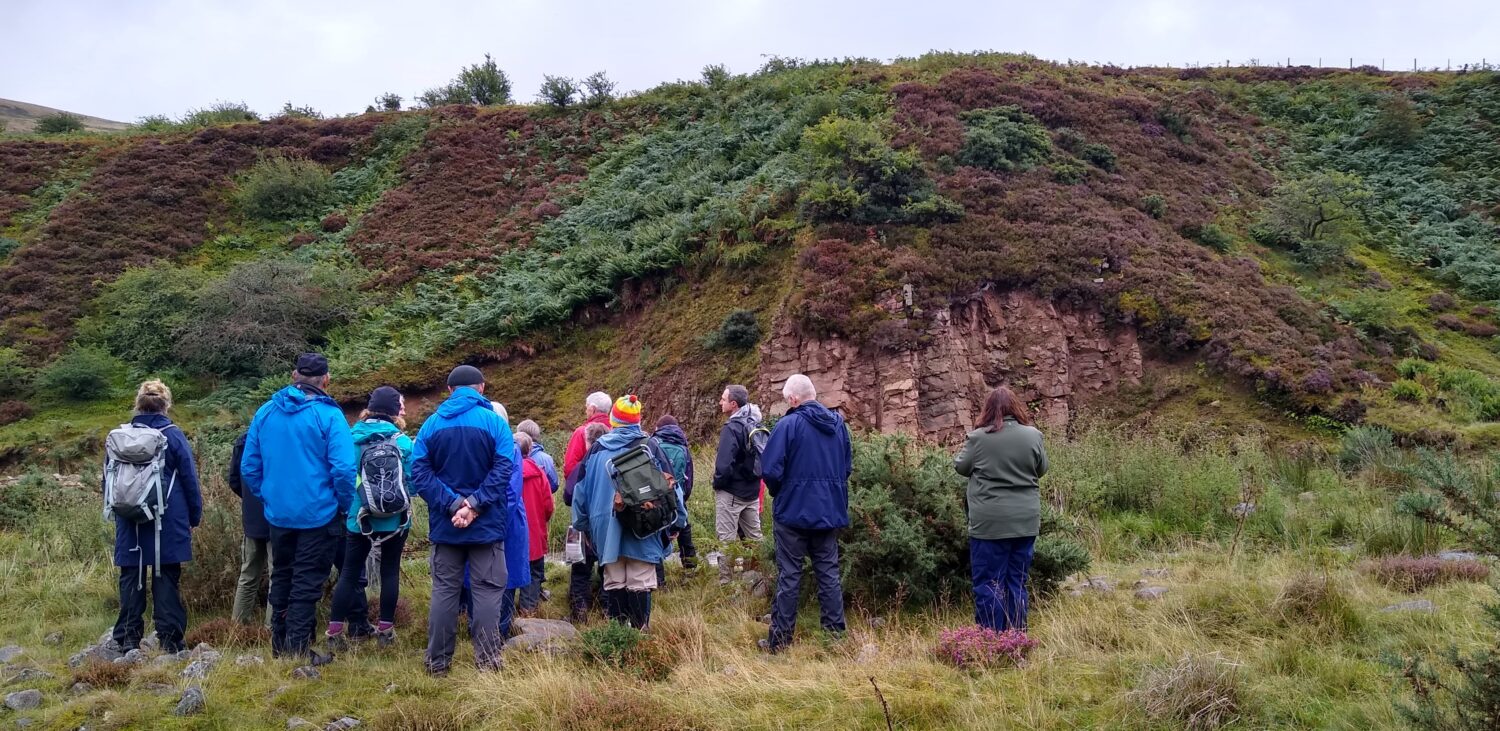
A rare exposure of the contact between the granite and andesite
The ‘strike’ of the granite intrusion is indicated by a small, in-situ block at the downstream point of an eyot, beyond the outcrop.
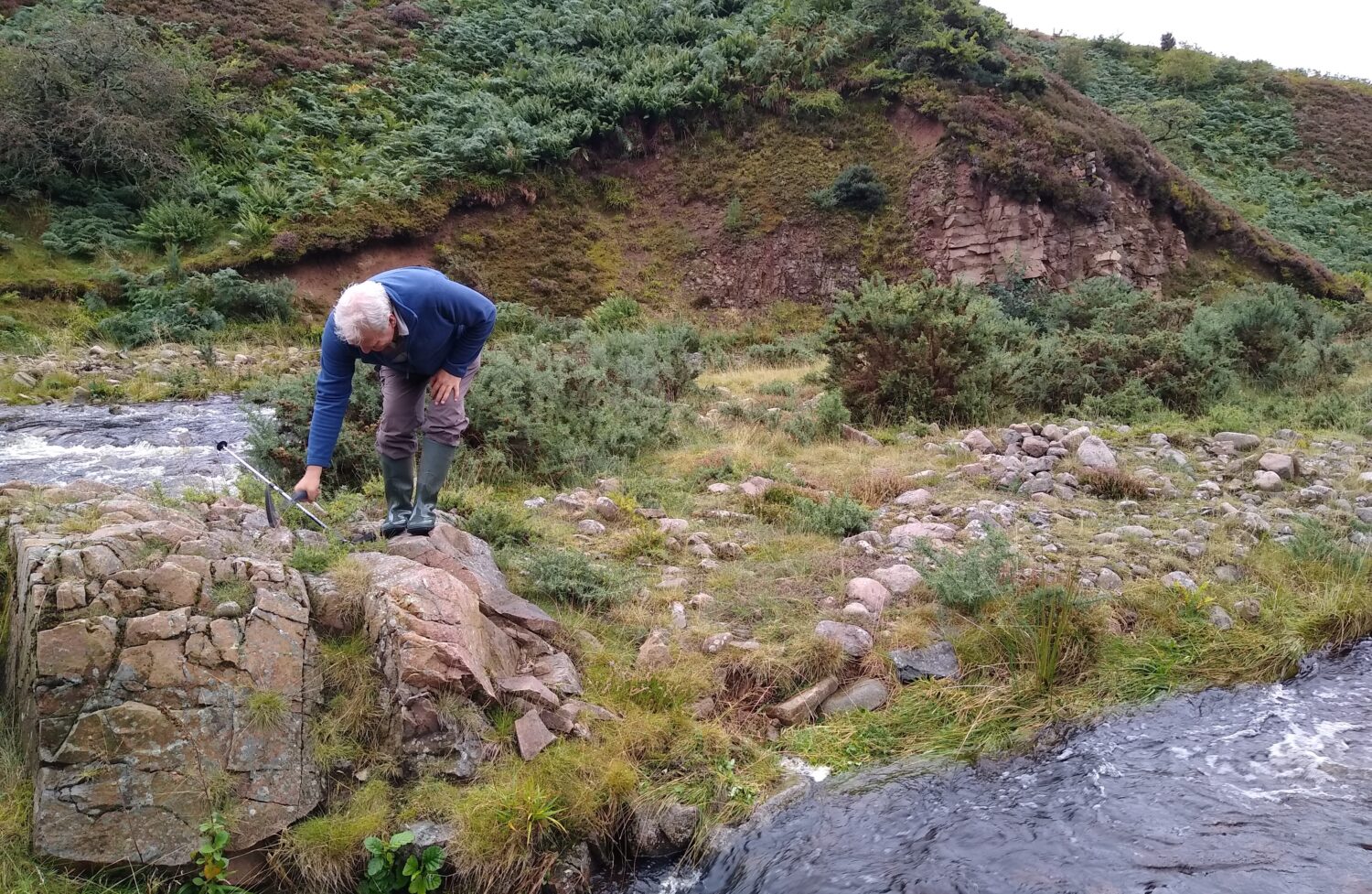
A small outcrop of the granite
Our last trip of the year is to Seaham on Saturday 1st October, 10am and you can book your place here. No knowledge of geology is necessary and trip notes will be provided before the event. All are welcome, but please turn up if you book.
We keep numbers around 20 people for safety and so everyone can hear explanations plus Q&A but are happy to run a repeat trip if there’s a big demand for a trip, so do let James know via James.Common@newcastle.ac.uk
Text & photos – Karl Egeland -Eriksen & Brenda Turnbull, Earth Science Coordinators